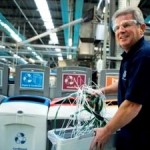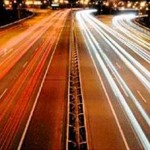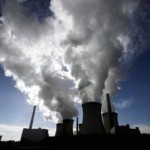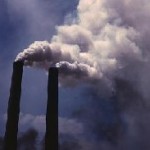- The overwhelming numbers of walkers and cyclists are answers for the future. Protect them: While the total number of daily car trips in Delhi is about 3 million, that of walking and cycling together is 8 million – 2.5 times more. Cycling trips at 2.8 million are almost equal to car trips, shows a 2008 study supported by the Union Urban Development Ministry. Though the modal share of walking and cycling are high in smaller cities, in absolute numbers, Delhi tops in daily cycling trips and is second to Mumbai in absolute number of walking trips. Even in car dominated roads like the Outer Ring Road – with very hostile traffic conditions – share of cycles is quite close to that of autos – 7 per cent and 9 per cent, respectively. It is astounding that in stretches like Uttam Nagar and Subhash Nagar on Shivaji Marg, and Jyoti Nagar East, etc., on Loni Road, the numbers of cycle and cycle rickshaw outnumber cars. For instance, on the Subhash Nagar stretch, there are 18,000 non-motorized transports vs. 4,000 cars.
- Yet Delhi roads kill highest number of pedestrians: Unsafe roads will further compromise use of public transport. The National Crime Records Bureau has exposed that Delhi records the highest pedestrian fatalities in road accidents in the country. Pedestrians and cyclists are easy victims to crashes and accidents. Policy disdain and neglect is responsible for this homicide of zero emitters who are part of the solution to the mobility crisis. If any other cause had led to so many deaths, it would have been a state of emergency.
- Motorization aggravates health impact of air pollution: In Delhi, where more than 3,000 premature deaths occur every year due to air pollution related diseases, as estimated by the US-based Health Effects Institute, vehicular pollution makes it worse. The 2010 study by the researchers of the University of California, Berkeley, have found that commuters in Delhi breathe far more harmful particles while traveling compared to the ambient concentration. The PM2.5 concentrations inside vehicles can be 1.5 times higher than the surrounding background air; and ultra-fine levels are about 8.5 times higher. Also about 55 per cent – more than half of Delhi’s population – live within 500 meters from arterial roads, and are directly affected by vehicular pollution. A 2010 study by the Kolkata-based Chittaranjan National Cancer Research Institute shows reduced lung function in 43.5 per cent school children in Delhi. A range of other diseases have now been linked with air pollution. What scourge awaits Delhi in 2021?
- Pollution impacts of motorization will worsen with expansion of diesel use and outdated technology: More than half of cars sold run on diesel that spew toxic and cancer causing emissions. The current Bharat Stage IV Emissions Standard in Delhi is inadequate to reduce the toxic risk from diesel.
What is needed?
Take people out of congestion by improving public transport. Build city at human scale and not vehicle scale.
- Bus, walk and cycle and improve last mile connectivity to escape pollution nightmare: People can be taken out of congestion with public transport measures. Delhi urgently needs to meet the target of 11,000 buses and also improve bus system in terms of speed, efficiency, frequency, reliability and quality of the services at affordable prices. The Transport Demand Forecast of RITES in 2011 says that 73 per cent public transport ridership by 2020 is achievable with buses and especially dedicated bus lanes. This will need supportive scaling up of walking and cycling infrastructure, para transit and feeder to Metro and increased capacity of Metro.
- More roads for vehicles are not the answer: Any amount of road space can get quickly saturated without restraint measures on personal vehicle usage through taxes and parking-charges. Delhi has massively invested in building roads and flyovers over the past years – the city has over 46 flyovers but most of the roads exceed their carrying capacity. Vehicles use-up huge amount of land for parking. In this situation, congestion is inevitable and so is its resultant pollution, oil guzzling and poor quality of city life.
Delhi can avoid the looming pollution and congestion disaster only if its transport planning hinges on sustainability, equity, and people-centric approach.
Source: CSE.














